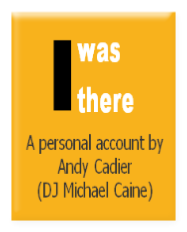© 2014-

 In this article Andy Cadier recalls some of the technical aspects of Radio Essex (and later BBMS)
In this article Andy Cadier recalls some of the technical aspects of Radio Essex (and later BBMS)
Radio Essex was based on Knock John Fort, an ex-
The generator used was one of three Gardner engines that were a part of the forts original equipment. These were located in the top floor of the circular rooms in the two legs of the tower, two in the rear leg and one in the front leg nearest the loading/landing stage.
There was a ventilator in the wall to allow air to reach the cooling radiator and the exhaust pipe went through another small hole. Most of the distribution wiring remained including the fuse-
The studio was on the main floor of the superstructure in a place we called the broom cupboard, I think it was originally a store about 1.5 metres by 3 metres. The audio equipment was arranged in the usual horseshoe shape design. To the left was a Vortexion tape recorder that was mainly used to playing back commercials.
In front of the DJ was a 50 watt amplifier (I think made by RSC) that included 4 variable inputs, two channels carried the presenters and the news microphones and the other 2 took the output of a home-
Also in front of the DJ was a Reslo ribbon microphone on a flexible stem which was fixed to the wall. Also on the wall, other than an electric battery powered clock was a home made VU (Volume Unit) meter so presenters could keep the audio output at the required level. To the extreme right was a microphone hanging from the ceiling (due to lack of space) and was used for news reading.
The studio door was made of heavy steel and did much to obscure the noise of the generator, the walls within the studio were lined in red blankets to create a suitable acoustic environment for the use of the microphones. The record library was on a number of shelves directly behind the DJ who sat on a rather basic wooden chair.
The transmitter room was next-
As time passed the engineers built another transmitter with similar components to the original, as thoughts had existed for the starting of a "Radio Kent" This expansion in fact never took place.
The original crystal for Radio Essex's 222 metres was slightly off channel and caused a heterodyne with a co-
Radio Essex was the first UK station to broadcast 24 hours a day. During the day it tried to pioneer the concept of local broadcasting and advertising. Many local business people were very wary of buying radio advertising, it was a medium totally new to them. Radio Essex programmes were not aimed at the same market as Radio London and Caroline and in fact had a variety of programmes not un similar to the BBC.....except the BBC could not play records all day because of an agreement with the musicians union. Radio Essex programmes featured rhythm and blues, jazz, music from shows, the big bands from the 30's to 50's and a whole repertoire of easy listening music.
At night things changed as it was found that after midnight the French station, also on 222m closed down giving a clear frequency over the UK and much of Europe. It was soon discovered that the so-
If Radio Essex could have had the telephone and general accessibility that local radio enjoys today Essex's output would have been very much akin to a commercial version of BBC local radio.
(Originally published on the Marinebroadcasters website.)
Thanks to Andy Cadier for sharing his memories of working on Radio Essex (as DJ Michael Caine) and for allowing the Museum to reproduce them here.